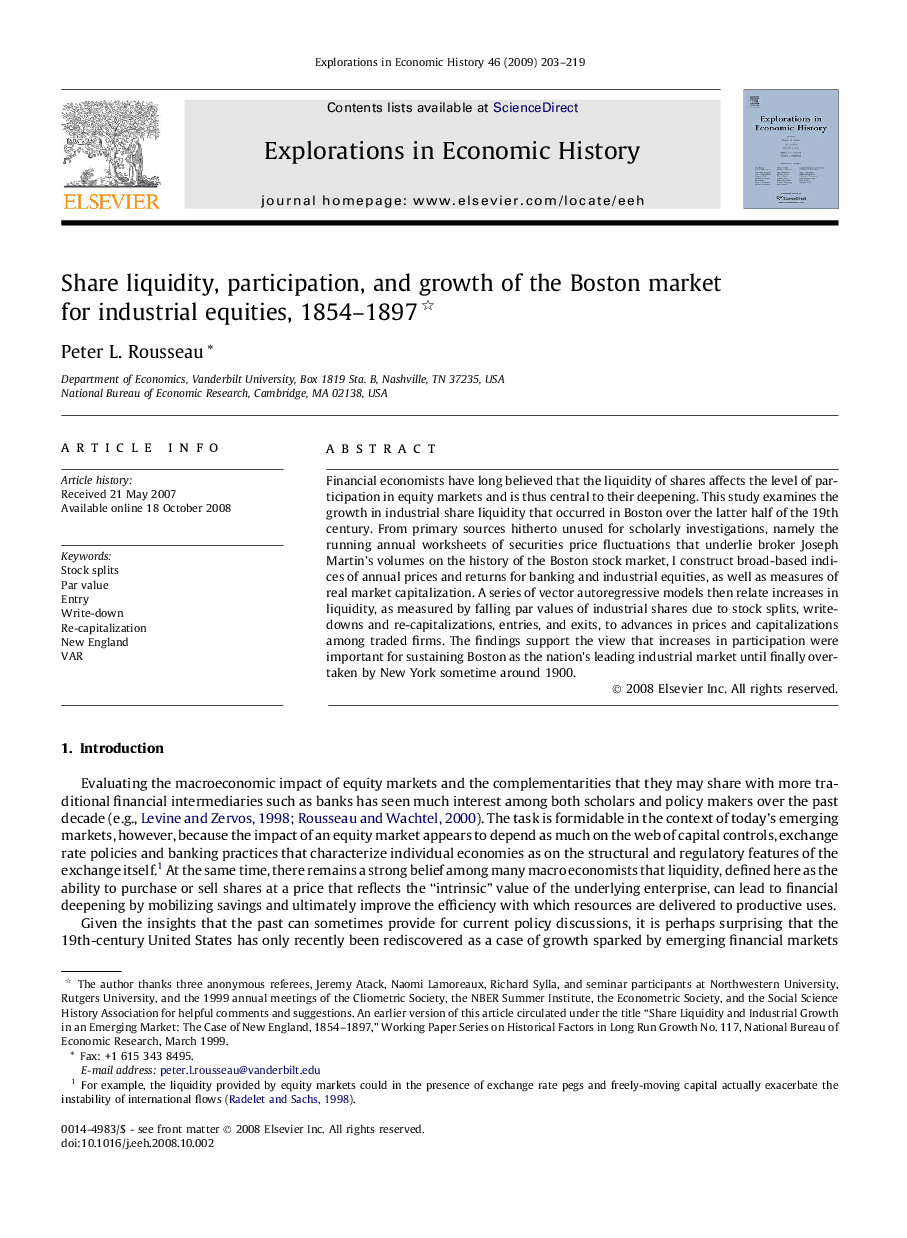| کد مقاله | کد نشریه | سال انتشار | مقاله انگلیسی | نسخه تمام متن |
|---|---|---|---|---|
| 5068925 | 1373018 | 2009 | 17 صفحه PDF | دانلود رایگان |

Financial economists have long believed that the liquidity of shares affects the level of participation in equity markets and is thus central to their deepening. This study examines the growth in industrial share liquidity that occurred in Boston over the latter half of the 19th century. From primary sources hitherto unused for scholarly investigations, namely the running annual worksheets of securities price fluctuations that underlie broker Joseph Martin's volumes on the history of the Boston stock market, I construct broad-based indices of annual prices and returns for banking and industrial equities, as well as measures of real market capitalization. A series of vector autoregressive models then relate increases in liquidity, as measured by falling par values of industrial shares due to stock splits, write-downs and re-capitalizations, entries, and exits, to advances in prices and capitalizations among traded firms. The findings support the view that increases in participation were important for sustaining Boston as the nation's leading industrial market until finally overtaken by New York sometime around 1900.
Journal: Explorations in Economic History - Volume 46, Issue 2, April 2009, Pages 203-219